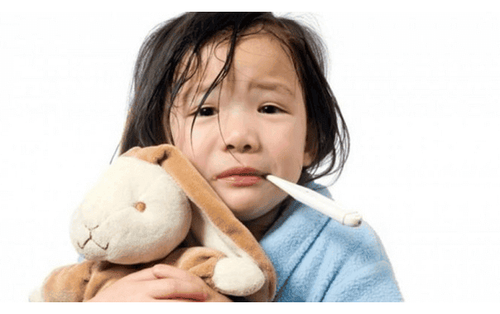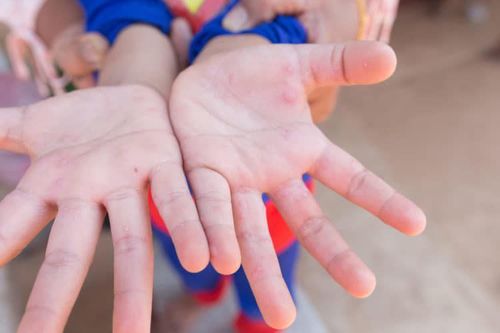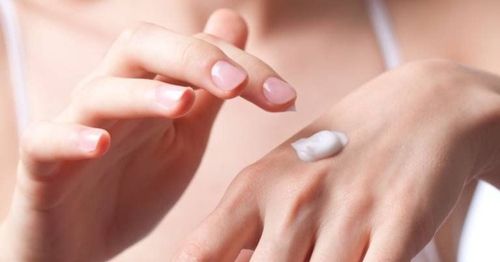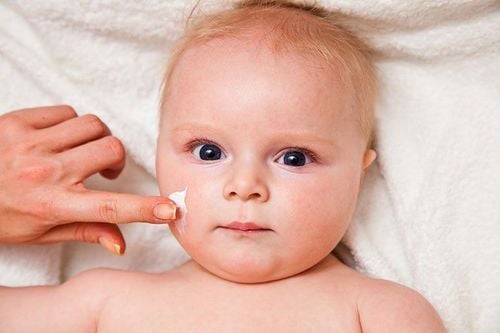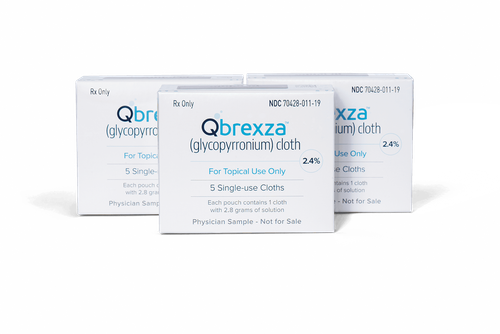This is an automatically translated article.
This article is professionally consulted by Master, Resident Doctor Dang Thi Ngoan - Pediatrician - Neonatologist - Department of Pediatrics - Neonatology - Vinmec Ha Long International Hospital.Heat rash occurs when the sweat glands are blocked, the disease usually occurs in the hot, humid summer, and most of the disease occurs in children, especially infants. The disease is usually benign and can go away on its own when the weather is cooler, but there are some things to keep in mind when treating baby heat rash to avoid causing skin infections that aggravate the child's condition.
1. Heat rash in babies
Children, especially newborns, because the sweat ducts are not fully developed, if the summer weather is hot and sunny, the child's body excretes a lot of sweat, which is a favorable condition to cause sweat stagnation and blockage of sweat glands. . Clogged sweat glands cause heat rash.Heat rash causes small blisters to grow in clusters, red skin, itchy babies, crying a lot, irritability and discomfort. The location of heat rash is mainly in the areas of the skin that have a lot of sweat such as the scalp, forehead, neck, shoulders, chest and back but can also be added in the armpits and groin.
The disease is usually benign and can be cured on its own, but there are also some cases that need to be treated because many cases of heat rash cause children to itch, scratch a lot, causing skin to rub and become infected with pustules and boils.
2. How to treat baby rash
2.1 Treatment of heat rash for children at home Usually benign heat rash can be cured without treatment. The most effective way to reduce heat rash is to reduce sweating by the following methods:Dress your child in soft, airy, loose cotton clothes. Use air conditioning, ventilation fans Limit movement Bath for children every day, wipe the interstitial areas such as armpits, groin so that the skin is clean, sweat is excreted easily. After bathing, dry the child with a soft, absorbent cotton towel and do not rub vigorously on the child's skin to avoid skin damage.
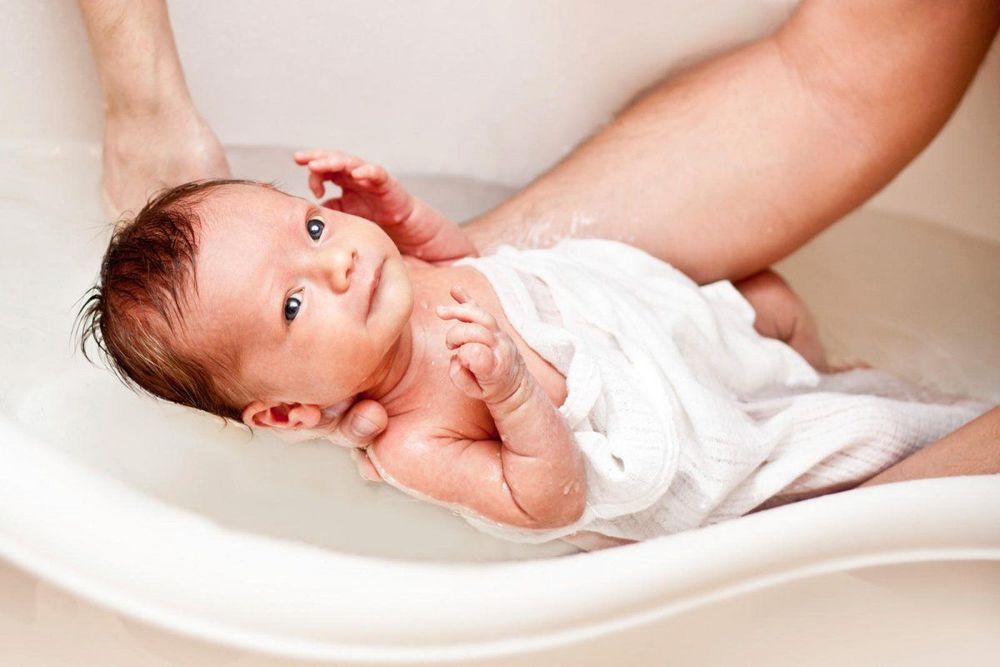
Tắm cho trẻ mỗi ngày
Calamine solution works to relieve itching, pain and discomfort in the skin. When using, take a clean cotton swab to absorb the solution and apply it to the skin, then let the medicine dry naturally. Pay attention only to the skin, avoiding the mucous membranes of the eyes, mouth, and genitals. Anhydrous lanolin can help prevent blockage of sweat ducts and stop new lesions from forming. Often used in severe forms of heat rash. Vitamin C: Helps reduce the damage caused by heat rash. 2.2 When do you need to go to the hospital? Conventional treatments are not effective. Children should be taken to the doctor when the following signs appear:
Appears lasting more than 3-4 days, skin lesions worsen. Pain, swelling, heat, and redness in the heat rash area. Heat rash may ooze pus, drainage of pus Swollen lymph nodes in the armpit, groin, or neck Symptoms of fever, possibly with unexplained chills.
3. Complications of heat rash
Heat rash is usually benign and goes away on its own, but sometimes complications can occur as follows:Skin infection: The lesions of heat rash can become infected with bacteria, creating pustules. Often due to itching, children scratch the skin, so bacteria have the opportunity to enter and cause infection. Heat shock: In hot weather, children with deep heat rash are at risk of heat shock with manifestations: Headache, rapid pulse, vomiting, low blood pressure... can lead to dangerous conditions.
4. Notes when treating baby heat rash
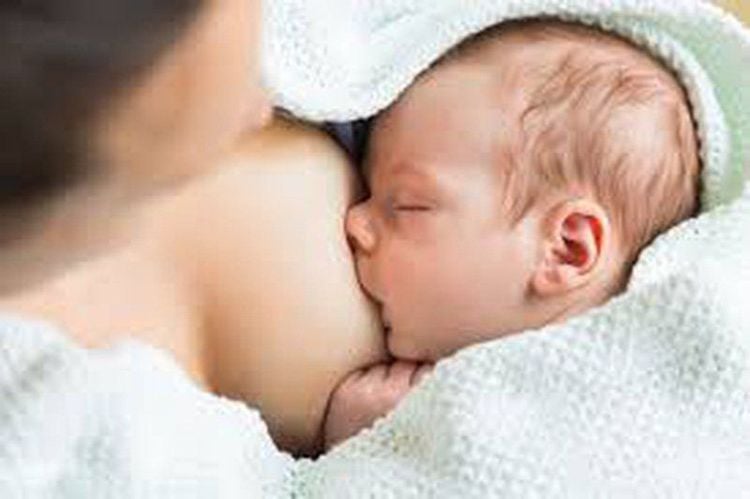
Nên cho bé bú nhiều
Baby's clothes must be washed and dried in a place where there is no dust or smoke. Should be dried in the sun because ultraviolet rays help kill bacteria on clothes.
Cut fingernails and toenails short for children to avoid scratching, causing skin infections.
Absolutely do not use talcum powder to apply on the heat rash, doing so will clog the pores, cause infection, and make the heat rash worse.
Limit children outside or play when the weather is hot. Especially the time from 10 am to 4 pm when UV rays are very active.
Bathe the baby with cool water and do not use soap that dries the skin, so use a gentle shower gel to avoid drying the baby's skin.
Do not apply a lot of cream on the baby's skin because it will block the pores, making the child more prone to heat rash.
Pay attention to severe cases, the child needs to be examined at the hospital. Do not arbitrarily use antibiotics when the child has a bacterial superinfection.
Heat rash in children is a common, benign disease that usually goes away on its own. Parents should also pay attention to some issues when treating heat rash for children so that the condition can recover quickly and limit unnecessary complications. Note that when the child has a more serious condition, it is necessary to take the child to the hospital, do not arbitrarily buy medicine to avoid leaving bad consequences for the baby.
For children to be healthy and develop well, it is necessary to have a nutritious diet in terms of quantity and quality balance. If children are not provided with adequate and balanced nutrients, it will lead to diseases of excess or lack of nutrients, which adversely affect the comprehensive development of children in terms of physical, mental and motor skills.
Children who do not eat properly are at risk of micro-mineral deficiency causing anorexia, growth retardation, malabsorption,... If they notice the above signs, parents should supplement their children with products. The supplement contains lysine, essential micro-minerals and vitamins such as zinc, chromium, selenium, and B vitamins to help fully meet the nutritional needs of children. At the same time, these essential vitamins also support digestion, enhance nutrient absorption, help improve anorexia, and help children eat well.
Parents can learn more:
Signs of zinc deficiency in children
Micronutrient deficiency and failure to gain weight in children
Please regularly visit Vinmec.com website and update useful information to take care of your child. Take care of the baby and the whole family.





